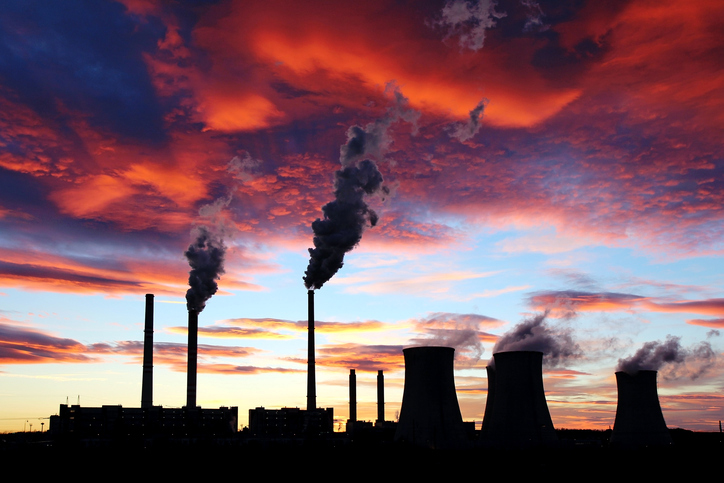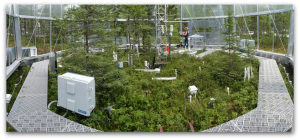 A team of researchers from Texas A&M University is looking to take the negative impact of excessive levels of carbon dioxide in the atmosphere and turn it into a positive with renewable hydrocarbon fuels.
A team of researchers from Texas A&M University is looking to take the negative impact of excessive levels of carbon dioxide in the atmosphere and turn it into a positive with renewable hydrocarbon fuels.
Greenhouse gasses trap heat in the atmosphere and therefore impact global temperatures, making the planet warmer. Carbon dioxide, the most common greenhouse gas, is emitted into the atmosphere upon burning fossil fuels, solid waste, and wood products, and makes up 81 percent of all greenhouse gas emissions in the U.S.
“We’re essentially trying to convert CO2 and water, with the use of the sun, into solar fuels in a process called artificial photosynthesis,” says Ying Li, principal investigator and ECS member. “In this process, the photo-catalyst material has some unique properties and acts as a semiconductor, absorbing the sunlight which excites the electrons in the semiconductor and gives them the electric potential to reduce water and CO2 into carbon monoxide and hydrogen, which together can be converted to liquid hydrocarbon fuels.”
This from Texas A&M University:
The first step of the process involves capturing CO2 from emissions sources such as power plants that contribute to one-third of the global carbon emissions. As of yet, there is no technology capable of capturing the CO2, and at the same time re-converting it back into a fuel source that isn’t expensive. The material, which is a hybrid of titanium oxide and magnesium oxide, uses the magnesium oxide to absorb the CO2 and the titanium oxide to act as the photo-catalyst, generating electrons through sunlight that interact with the absorbed CO2 and water to generate the fuel.
(more…)
 On June 24, 2020, Dr. Paul Kenis, 2020 winner of the Energy Technology Division Research Award, presented his talk on “Electrochemical CO2 Reduction: Path Towards a Carbon Neutral Chemical Industry?” via a live webinar presentation.
On June 24, 2020, Dr. Paul Kenis, 2020 winner of the Energy Technology Division Research Award, presented his talk on “Electrochemical CO2 Reduction: Path Towards a Carbon Neutral Chemical Industry?” via a live webinar presentation.

 Scientists have found a way to make their asphalt-based sorbents better at capturing carbon dioxide from gas wells: Adding water.
Scientists have found a way to make their asphalt-based sorbents better at capturing carbon dioxide from gas wells: Adding water. While pursing work on the highly desirable but technically challenging lithium-air battery, researchers unexpectedly discovered a new way to capture and store carbon dioxide. Upon creating a design for a lithium-CO2 battery, the research team found a way to isolate solid carbon dust from gaseous carbon dioxide, all while being able to separate oxygen.
While pursing work on the highly desirable but technically challenging lithium-air battery, researchers unexpectedly discovered a new way to capture and store carbon dioxide. Upon creating a design for a lithium-CO2 battery, the research team found a way to isolate solid carbon dust from gaseous carbon dioxide, all while being able to separate oxygen. The global development of industry, technology, and the transportation sector has resulted in massive consumption of fossil fuels. As these fuels are burned, emissions are released—namely carbon dioxide. According to the U.S. Environmental Protection Agency, combustion of petroleum-based products resulted in
The global development of industry, technology, and the transportation sector has resulted in massive consumption of fossil fuels. As these fuels are burned, emissions are released—namely carbon dioxide. According to the U.S. Environmental Protection Agency, combustion of petroleum-based products resulted in  A team of researchers from Texas A&M University is looking to take the negative impact of excessive levels of carbon dioxide in the atmosphere and turn it into a positive with renewable hydrocarbon fuels.
A team of researchers from Texas A&M University is looking to take the negative impact of excessive levels of carbon dioxide in the atmosphere and turn it into a positive with renewable hydrocarbon fuels.


